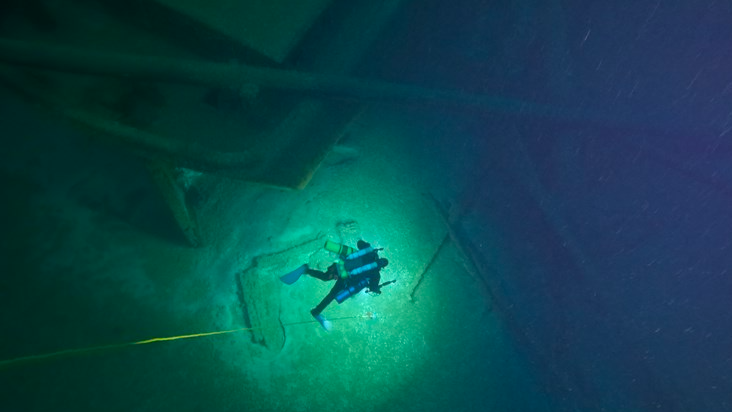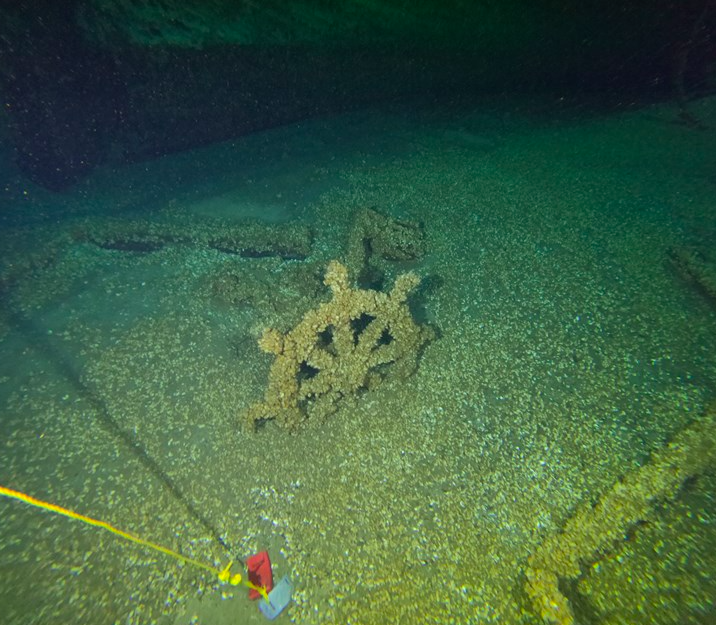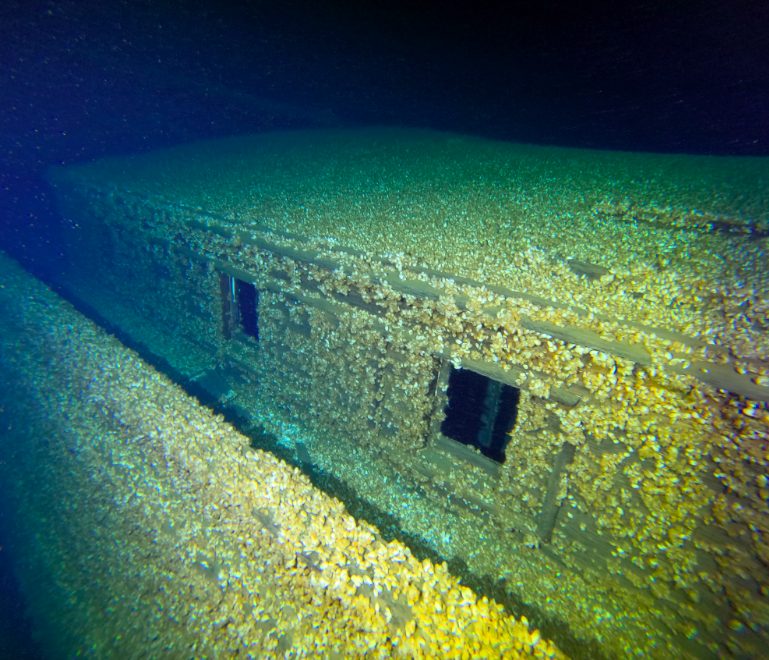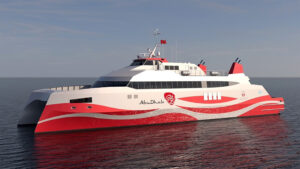Video: Time-capsule schooner found in 270ft of water

A long-lost shipwreck, the schooner Trinidad, has been discovered in Lake Michigan, Wisconsin. The vessel, built in 1867, is remarkably intact, with the deckhouse still in place, containing the crew’s possessions, dishes, anchors, bell and many other artefacts from the day it sank.
On its final voyage, Trinidad was travelling down the coast of Wisconsin towards Milwaukee, where the vessel began to fill with water. Seemingly that wasn’t an uncommon occurrence as, according to the Wisconsin Historical Society (WHS), the owners did not invest much money into the vessel’s continued upkeep.
Trinidad continued on course until suddenly and violently lurching. The boat began to sink. The captain and the crew immediately escaped in the ship’s yawl, and after battling waves, the cold crew made it into Algoma (then Ahnapee). The only loss aboard Trinidad was the ship’s mascot, a large Newfoundland dog.
Shipwreck hunters located the wreck in 270 feet of water in July 2023. The pair had been searching for the lost ship for the past two years. Since then, Brendon Baillod and Bob Jaeck have worked with WHS maritime archaeologists to document, preserve, and share the discovery.
Trinidad’s main purpose was to carry coal or iron from Oswego, New York, then the eastern terminus of the Lakes, to Chicago and Milwaukee on the western Lakes before returning with ‘prairie gold’, Wisconsin wheat, which would then be shipped down the Erie or Oswego Canal to the big cities of the east coast.

The grain trade was extremely lucrative, and Trinidad made a fortune for its owners, making hundreds of trips during its career, writes Baillod in Shipwreck World.
Trinidad was built in 1867 at Grand Island, New York, by Oswego shipbuilder William Keefe. Built for merchants John Keller and Aaron B. Merriam, the schooner was a ‘canaller’, meaning it was specially built to pass through the Welland Canal that connected Lake Erie and Ontario.
Portions of the vessel, such as the lifeboat davit, could fold in to allow the ship to traverse the canal. Trinidad was outfitted with wire rigging for the masts, a feature uncommon in ships of that era.

In May 2023, the first full-sized digital scan of the Titanic, which lies 3,800m (12,500ft) down in the Atlantic, was released. Through the largest underwater 3D capture project ever undertaken, research scientists mapped the ship in its entirety. From this data, a ‘digital twin’ was created that shows the wreck to a level of detail and clarity never seen before.
Images courtesy of Tamara Thomsen and WHS via Facebook.










